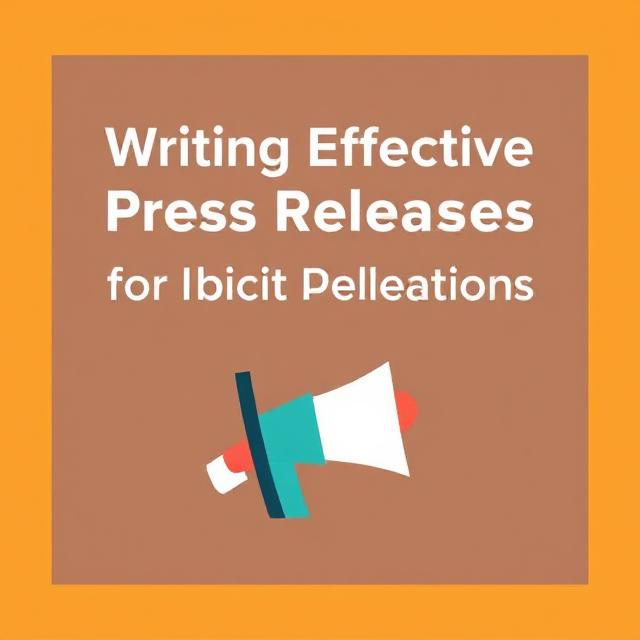
A well-crafted press release can be one of the most powerful tools in a public relations (PR) professional’s arsenal. Whether you want to announce a product launch, an event, a partnership, or a company milestone, a press release communicates your message directly to media outlets, journalists, and the public. In this article, we will break down the essential elements of writing an effective press release that captures attention and drives results.
What is a Press Release?
A press release (also known as a news release) is an official written statement delivered to media outlets to announce something newsworthy. It serves as a way to generate media coverage and inform the public about important updates or events within an organization.
A successful press release should:
- Convey news in a clear, concise, and compelling manner.
- Be written in a professional, journalistic style.
- Provide all the necessary details without being overly promotional.
Why Press Releases Matter in PR
Press releases are essential for several reasons:
- Media Coverage: A well-timed and well-written press release can attract the attention of journalists and secure coverage in relevant media outlets.
- Reputation Management: Press releases help shape public perception by controlling the narrative around company news.
- Increased Visibility: They enhance your brand’s visibility and credibility by reaching a wide audience.
- Crisis Communication: In times of crisis, press releases offer a reliable channel to communicate facts and updates.
Key Elements of an Effective Press Release
A successful press release follows a standard format and includes essential components to ensure clarity and impact.
1. Headline
The headline is the most critical part of your press release. It must grab attention and summarize the announcement in a few words.
Tips for a strong headline:
- Keep it concise (10–12 words max).
- Use active verbs and clear language.
- Highlight the newsworthy aspect.
Example: “Tech Innovators Launch Revolutionary AI Platform to Transform Education”
2. Subheadline (Optional)
The subheadline provides additional context or detail to support the headline. It should be informative and lead the reader into the main content.
3. Dateline and Lead Paragraph
The dateline includes the release date and location of the news. The lead paragraph (first paragraph) should answer the basic questions:
- Who?
- What?
- When?
- Where?
- Why?
Example Lead Paragraph:
San Francisco, CA – February 5, 2025 – XYZ Corp. announced today the launch of its groundbreaking AI-powered learning platform designed to improve educational outcomes for students worldwide.
4. Body Content
The body of the press release provides more detail and context, expanding on the information in the lead paragraph. Use short paragraphs and avoid jargon.
Include:
- Background information about the company or event.
- Relevant quotes from key figures (e.g., CEO, spokesperson, or partner).
- Data and statistics to support your claims.
Example Quote:
“We are thrilled to introduce this innovative platform that will make learning more accessible and effective,” said John Doe, CEO of XYZ Corp.
5. Boilerplate
The boilerplate is a brief description of the company, usually found at the end of the release. It should include key information such as the company’s mission, history, and relevant achievements.
Example Boilerplate:
About XYZ Corp.: Founded in 2015, XYZ Corp. is a leading provider of educational technology solutions, dedicated to enhancing learning experiences through innovative AI tools. For more information, visit www.xyzcorp.com.
6. Contact Information
Always include contact details so journalists can reach out for more information. Provide the name, title, phone number, and email address of a media contact.
Best Practices for Writing Press Releases
To ensure your press release is effective, follow these best practices:
1. Keep It Newsworthy
Your press release should be timely and of interest to the media and public. Ask yourself:
- Is this information relevant to a broad audience?
- Why would someone care about this news?
2. Write in a Journalistic Style
Use the third-person perspective and avoid promotional language. Stick to facts and ensure the content is objective and credible.
3. Be Concise
Limit your press release to one page (300–500 words). Busy journalists won’t read long, dense content.
4. Use Multimedia
Enhance your press release with multimedia elements like images, videos, and infographics. These increase engagement and improve the likelihood of your story being picked up.
5. Proofread and Edit
Ensure your press release is free of grammatical errors and typos. Double-check all facts, quotes, and names for accuracy.
Common Mistakes to Avoid
Even experienced PR professionals can make mistakes when writing press releases. Here are some pitfalls to avoid:
- Overhyping: Avoid exaggerated claims or buzzwords. Keep it grounded in facts.
- Burying the Lead: Don’t make readers hunt for the key message—state it clearly in the first paragraph.
- Lack of a Call to Action: Always guide readers on the next step, whether it’s visiting a website or contacting a representative.
- Ignoring Formatting Standards: Stick to the standard press release format for credibility and readability.
How to Distribute a Press Release
Writing a great press release is only half the battle; you must also ensure it reaches the right audience. Here’s how to distribute it effectively:
- Direct Outreach: Send your press release to targeted journalists, bloggers, and media outlets.
- Newswire Services: Use services like PR Newswire or Business Wire for wider distribution.
- Company Website and Social Media: Publish the press release on your website and share it across social media channels.
Writing an effective press release requires careful planning, precision, and a clear understanding of your audience. By following the guidelines and best practices outlined in this article, you can create compelling press releases that capture attention, generate media interest, and achieve your communication goals.
Whether you’re promoting a new product, announcing a major event, or managing a crisis, a well-crafted press release can make all the difference in ensuring your message reaches the right people.

